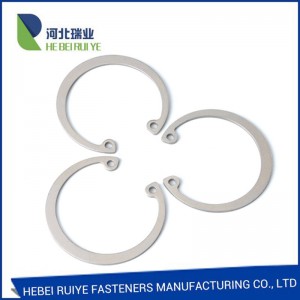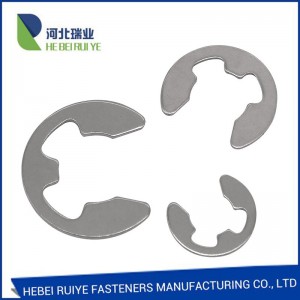Ṣiṣepo Pipọnti Pipọnti pupa ti o ni Didara giga Ọja Pin Ọja iṣelọpọ ni China Din11023
Ohun elo ti pinni:
DIN11023, pinni titiipa, Awọn pin titiipa Wire, titiipa awọn
pinni Awọn ohun elo: Irin Epo irin / Irin Alagbara,
Awọn ohun elo Wiwakọ:
Itọju
Ifiwe Apopọ M: M4.5-M12
Ifiwe ipari : 30mm-90mm
Gbogbo iwọn tabi gbejade ni ibamu pẹlu ibeere rẹ
Awọn pinni linch wa ni lilo pupọ ni ile-iṣẹ ogbin fun ipamo awọn irinṣẹ si aaye mẹtta mẹtta ti a. O tun le ṣee lo awọn pinni fun gige ni aaye ipo fun aabo ipari awọn pinni
PIN ailewu jẹ iyatọ ti pinni deede eyiti o pẹlu ẹrọ orisun omi ti o rọrun ati idimu. Kilaipi naa ṣe awọn idi meji: lati fẹlẹfẹlẹ kan ti titiipa titete ni titọpa titiipa daradara si ohunkohun ti o lo si, ati lati bo opin pinni naa lati daabobo olumulo lati aaye to fẹsẹ.
Safety pins are commonly used to fasten pieces of fabric or clothing together. Safety pins, or more usually a special version with an extra safe cover, called a nappy pin, or loincloth pin, are widely used to fasten cloth diapers (nappies), or modern loincloths, as the safety clasp, while remaining ingestion hazard,[1] prevents the baby girl or boy from being jabbed. Similarly, they can be used to patch torn or damaged clothing. Safety pins can also be used as an accessory in jewelry, like earrings, chains, and wristbands. Sometimes they are used to attach an embroidered patch. Size 3 is often used in quilting and may be labelled for purchase as a "quilting pin". Size 4 and larger may be called "blanket pins" and deemed acceptable as kilt pins for informal dress, depending upon design and appearance.
PIN ti o ni eti, ti o so mọ okun waya ti a so pọ pẹlu fila ti o fi ipari si ni ipari okun waya. Titari awọn PIN sinu šiši fila naa ni aabo aabo ti PIN, ati kilaipi naa ni pipade.

















